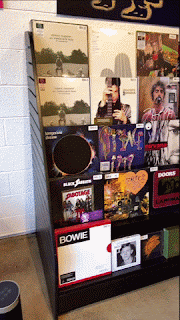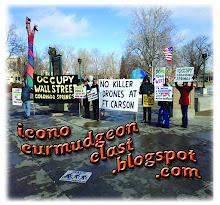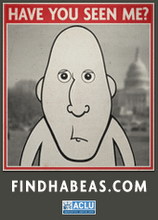The rise of Discus Obsessivarus, or "Collector Scum" - 1970-72
Our tumble-down Victorian house was badly in need of a facelift in the
summer of 1970, and the teenage dynamic duo of Dave and Nate proved up to the
task of hanging off eaves and leaning backward off balconies. They were
surprised that a precocious and annoying 13-year-old was well-versed in bands
that mattered, but they expressed shock that I hadn’t already joined a record
club to maximize my listening options. They helped me scan the Columbia House
12-for-a-penny list, and my introductory package of LPs included the debut
eponymous albums of Johnny Winter and Eric Clapton, Janis Joplin’s Kozmic Blues, Traffic’s John Barleycorn Must Die, Joan Baez’s One Day at a Time, and
other titles lost in the haze of a half-century. Not only was this a rich
initial feast to be augmented every few weeks by supermarket purchases, but
albums made an ideal present to beg from relatives – Crosby, Stills, Nash &
Young’s Déjà vu and Led Zeppelin’s III were Christmas presents for the new era. I quickly got my first exposure
to releases outside the Columbia House mainstream. My introduction to glam, for
example, was Alice Cooper’s Love It to Death. It’s
fair to say that many youth not yet in high school became album-heads in late
1970, in part because of the media hype surrounding the back-to-back deaths of
Janis Joplin and Jimi Hendrix.
Somewhere in the early 1970s,
I joined with millions of other “serious” music fans in losing interest in the
Top 40 and pop-music radio in general. Sure, I’d consult the lists in the late
1970s to see how punk was faring, against both disco and teen heartthrobs like
Andy Gibb. Even in the 1980s and 1990s, I was dimly aware that a Top 40
existed, but radio (at least the continuous-hit variety) seemed like an
irrelevant environment by that time. In the 21st century, songs were
introduced primarily through playlists, or as soundtracks to popular shows, but
still the Top 40 survived in odd little I Heart Radio niches. But the mere fact
that I could zone out one music media venue so quickly in 1970 gave me an
object lesson of how young adults leaving their high school or college years
could suddenly zone out on musical interests in general. The fleeting nature of
consciousness makes it all too easy to practice tunnel vision.
I juggled multiple budgets in
order to stay current with new LPs, while trying to fill back catalogs of the
weirder artists that really appealed to me, like Frank Zappa and Captain
Beefheart. The Ann Arbor/Detroit collective of musicians loosely associated
with John Sinclair – including the MC5 and Iggy and the Stooges – made me feel
as though Michigan was an important defining base for radical culture. So what
if Sinclair and his White Panthers were slightly behind the West Coast? John
Lennon, at the peak of his radicalism with Yoko, always seemed a year or two
behind the times, but that did not cut into his effectiveness. Wayne Kramer and
Rob Tyner from the MC5 taught me what “rhetoric” meant, while Iggy, already a
terror to middle-class parents in 1970, prepped me for the glam-rock era when
his re-formation of The Stooges put the band in the center of the Bowie-Reed
crowd. I remember my parents telling me in 1970 that they didn’t mind most of
the bands scheduled to play at the Goose Lake festival, but “that Iggy, he’s
just a threat to society!” Yep.
The deaths in rapid
succession of Jimi Hendrix, Janis Joplin, and Jim Morrison predated a distinct
fragmentation among not-so-underground AOR artists. Joni Mitchell and Neil
Young were among songwriters opting for heady introspection, and savvier
listeners were turning to borderline introverts like Nick Drake as well. British
hard rockers like Led Zeppelin were setting the stage for a brasher (and more
predictable) class of rockers ranging from Humble Pie in early days to AC/DC
later in the decade. In fact, Led Zepplin’s diverse and superb III album did not get the audience it deserved because O.G. fans insisted
it didn’t “rock out” enough. In the latter years of driving to cassette and
8-track tapes, this particular listener of “heavy music only, please” became
increasingly annoying (see Chapter 5). This put innovative songwriters like
Pete Townshend in something of a quandary – how would one strive for something
akin to a concept album while rocking hard enough to please the masses? (In the
case of The Who, percussionist Keith Moon solved the problem by treating any
composition with a bit of manic intent.)
Because 1970-71 represented
the precipice before the arrival of Ziggy-era Bowie, Blue Oyster Cult, and many
other larger-than-life acts, it’s easy to forget how conservative AM pop radio
became by late 1971, as though everyone needed a rest. There was more
Carpenters, Bread, Cat Stevens, Cher, and Carole King than ever before. John
and Yoko, after a string of provocative singles, released the era-defining Imagine in 1971. It felt as though the world needed a
break after living through 1960s chaos. Entering high school in 1971 might have
meant frosh dances in previous decades, but I was head-down obsessed in album
rock. Getting stoned was still a couple years away, but there already existed
an attitude of taking music too seriously that interfered with the physical joy
of an upbeat pop song.
As late 1970 waded through
1971 and into 1972, singles experienced more longevity on the charts – both for
decent songs like Stevie Wonder’s “Superstition,” Roberta Flack’s “Killing Me
Softly,” or Carly Simon’s “You’re So Vain,” but also for the dreck that made up
most of the Top 10. Some chart analysts say it was the vacuity of the charts in
the latter half of the 1970s that pulled people to either punk or disco (with a
smattering of true rap options just beginning in that era), but a more careful
examination would prove that the singles charts had lost most of their sparkle
even as the 1970s began. Hence the domination of the 40-minute long-playing
album in that decade.
Just as some entering high school became obsessive statistics gatherers of a favorite outdoor sport, or detailed monitors of TV shows and movies, I was one of the music nerds who ordered Schwann LP catalogs so I could develop a full picture of musicians in the pop and jazz fields. It was Schwann that introduced me to several fringe artists of the underground-beyond-underground, from Patrick Sky to Pearls Before Swine.
My
pledge to follow liner notes as closely as some follow score cards only lasted
a decade or two, as I learned much later in life of all the details I failed to
pick up by neglecting the smaller-print liner notes for CDs. It wasn’t long
before I learned about music fidelity, though I lived with crap turntables and
preamps for years. It was only through the college-age older siblings of
friends that I learned names like Technics and Sony. Given the 21st-century
vinyl revival based on the supposed better fidelity of an analog source in
reproducing sounds, it seemed ironic that the two formats to challenge LPs in
the 1970s, 8-track tapes and audio cassettes, took market share from LPs based
on their portability and ease of use, since their fidelity was hardly
comparable to vinyl.
It’s easy in retrospect to
forget how significant the growth of LP sales was in the first half of the
1970s. In the watershed year of 1970, more than 500 million units were sold
worldwide, amounting to 40% of all physical media. The numbers sold per year
remained above 300 million well into the 1970s, when cassettes in particular
began edging out vinyl sales. While much ink has been spilled over the 21st-century
vinyl resurgence, particularly after prices surged in the wake of pandemic
shortages, the number of LPs sold in 2022, for example, registered only 41.3 million
physical albums (8.2% of 1970 totals), accounting for 43 percent of physical albums sold in that
year. Statista Inc, is quick to point out, however, that if streaming and
downloading is factored in, LPs accounted for only 5 percent of equivalent
album listening in 2022. Thus, 1970 represented the top of the curve in several
senses.
The evolutionary rise of the
creature known as “Collector Scum” happened slowly and subtly. Before the
advent of tapes or CDs, corporate labels released only mono and stereo versions
of an album (and mono ended up being the one with more collector value over a
50-year period). Occasionally, you might get production mistakes that would
result in higher prices for a supposedly flawed product – The Beatles’ banned
“butcher-block” cover for Yesterday and Today was a
perfect example. But the more collectible LPs arrived courtesy of the plausibly-deniable
pirates who released bootleg LPs, specializing in live performances or
unreleased demos from top-selling artists. One of the finest legacies of the
1970s bootlegs came in the experimentation with different colors of vinyl for
the LP, not just a yellow or a transparent red, but even splatter-rainbow
colors for some choice bootlegs. The vinyl revival of the 21st
century brought with it the return of special colors of vinyl for
limited-edition LPs, but few remembered that the pirate manufacturers of the
1970s are the ones who really brought colored vinyl out of the preschool
children’s-specialty market, and into the rock mainstream.
In the final months of junior
high and the summer prior to entering high school, I experimented with
producing a mimeographed equivalent of an underground newspaper, though the
cultural issues to get excited about were only a whisper of the 1965-70 period.
City-specific tabloid alternative newspapers were expanding tremendously in the
1971-74 era, like the Lansing-area Joint Issue, later to
become Lansing Star. But except for the occasional
large demonstration, these newspapers’ claim to a counterculture centered
primarily on recreational drug use. Even as Richard Nixon’s Vietnamization made
the prospect of a draft slowly wind down, there still were significant protests
against the war, and in favor of nascent women’s rights, gay rights,
recognition of indigenous people. Yet although memoirs from Abbie Hoffman and
Jerry Rubin became best-sellers, there was a definite feel by late 1971 that
youth revolt had entered a waning phase.
If drugs were the only
countercultural option around, then that would be a necessary accompaniment to
music. I tried weed for the first time just shy of my 15th birthday,
in the spring of 1972, and added a few hallucinogens not long after. It
provided an interesting perspective, but I looked on in frustration as a
significant number of teens seemed to prefer the new downer, Quaaludes, which
failed to attract my interest at all. My definition of altered consciousness
centered on artists like Zappa and Beefheart and the related mind expansion,
not in hollering “Yeah!” to down and dirty blues. That cleaving was the first
parting of ways I experienced from mainstream arena hard-rock, as I spent more
time with glam rock, progressive rock, and experimental artists.
In three weeks - Chapter5 - Tapes, Taping, and Subgenres - Struggle for Market Dominance
Copyright 2024 Loring Wirbel










